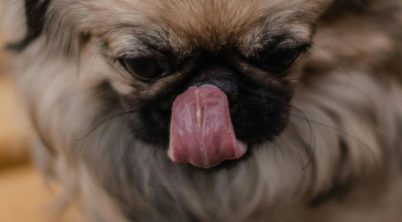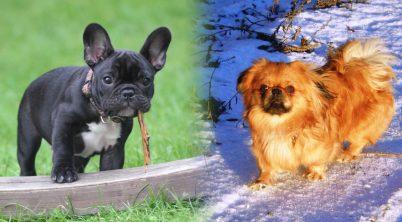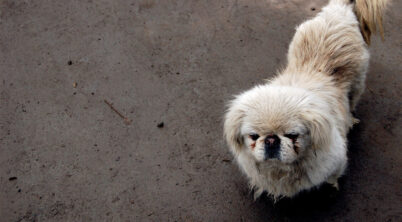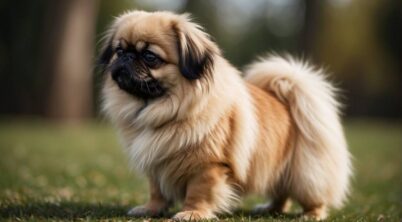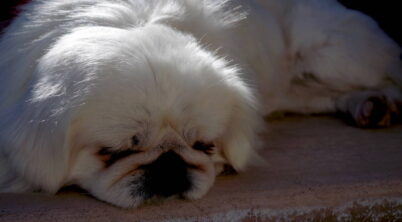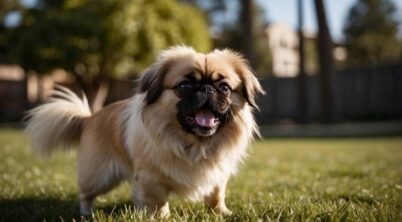The Pekingese, a breed steeped in ancient Chinese heritage, commands attention not only for its distinctive lion-like mane but also for its longevity. Male Pekingese are known to have a lifespan that typically ranges from 12 to 15 years. This life expectancy can be attributed to several factors, including their genetics, the quality of care they receive, their diet, and the environment they live in.
Owning a Pekingese comes with a commitment to ensuring the best possible care that can help extend their lives. This breed is characterized by its small size, with males generally weighing between 7 to 14 pounds. While small in stature, they are muscular and hearty animals. With appropriate veterinary care, proper nutrition, and suitable exercise regimens, these dogs can enjoy a full and healthy life spanning the upper range of their expected lifespan.
It’s essential to note that individual lifespans can vary greatly among these canines, just as with any other breed. Owners should be aware that while statistics can guide expectations, they are not definitive for every dog. Regular check-ups, a balanced lifestyle, and a nurturing home environment are crucial in helping a male Pekingese thrive well into its elder years.
Table of Contents
Pekingese Lifespan Male
The Pekingese male possesses a lifespan similar to its female counterparts, typically spanning 12 to 15 years. This expectation hinges on several pivotal health and lifestyle factors. Here’s a breakdown of these key determinants:
- Genetics: Males inherit traits that can influence their longevity.
- Healthcare: Regular veterinary check-ups and vaccinations are crucial.
- Diet: A balanced diet tailored for the breed supports their overall health.
- Exercise: Moderate daily exercise helps maintain an ideal weight.
- Environment: A safe and loving home environment can reduce stress.
Importantly, individual males may experience variations in their lifespan due to unique genetic dispositions and the quality of care received. Health issues particular to the breed, such as respiratory problems due to their short snouts or eye issues, can affect the Pekingese males specifically and, by extension, their longevity. Proactive management of these health concerns is imperative.
It is beneficial for owners to engage with breed-specific support groups or resources to stay informed about potential male Pekingese health problems and the latest care strategies. This, combined with a close relationship with a trusted veterinarian, can optimize the chances for a Pekingese male to live a full and healthy life.
Health and Lifespan
Pekingese dogs have a reputation for being long-lived, but their health is closely tied to certain breed-specific issues. With the right care and awareness of health concerns, owners can help their Pekingese enjoy a full lifespan.
Average Lifespan and Longevity
The average lifespan for a Pekingese typically ranges between 12 to 15 years. Factors such as genetics, quality of veterinary care, diet, and living environment significantly affect their longevity. With responsible ownership and attention to health care, Pekingeses have the potential to reach the upper end of this lifespan spectrum.
Common Health Issues
Pekingeses are susceptible to a variety of health problems. Key issues include:
- Heart disease: Regular check-ups can aid early detection and treatment.
- Eye Problems: Due to their prominent eyes; they may experience issues such as ulcers.
- Obesity: Maintaining an appropriate weight reduces the risk of related health problems.
- Patellar Luxation: A common joint issue in small breeds, this can affect mobility.
- Cancer: Incidences can increase with age; awareness and vet care are crucial.
- Arthritis: Often seen in older Pekingeses, contributing to decreased activity levels.
- Progressive Retinal Atrophy: An inheritable condition that can lead to blindness; early screening is advised.
Managing these conditions often involves a combination of medical treatment and lifestyle adjustments.
Brachycephalic Health Concerns
Pekingeses belong to the brachycephalic breed group, characterized by their short muzzles and flat faces. This trait predisposes them to:
- Respiratory Issues: Their respiratory tracts are compromised, which can cause breathing difficulties.
- Heat Intolerance: They are more prone to overheating; owners should monitor their activity especially in hot weather.
Veterinary care is paramount for brachycephalic breeds to address and mitigate these health challenges effectively.
Diet and Nutrition
Proper diet and nutrition are fundamental for maintaining the health and longevity of a Pekingese. The diet should consist of high-quality dog food, which can be commercially manufactured or home-prepared under veterinary supervision. Due to their small size, Pekingese have less calorie requirements compared to larger breeds, yet the food must be nutrient-dense to support their energy levels.
- Feeding Schedule: They typically thrive on two small meals per day.
- Portion Control: Overfeeding can lead to obesity, a common issue in the breed.
Fats and Proteins:
- Should include an appropriate balance of fats and proteins.
- Fats are essential for energy and coat health, while proteins support muscle maintenance.
Weight Management: Keep a regular check on their weight to prevent obesity, which can exacerbate potential health issues.
Treats:
- Should only be given in moderation.
- Useful for training purposes but account for their daily calorie intake.
Balanced Diet Considerations:
- A balanced diet includes a proper mix of the following:
- Carbohydrates for energy
- Fats for coat and cell function
- Proteins for muscle and tissue repair
- Vitamins and minerals for overall health
Nutritional Adjustments:
- Nutrition should be adjusted according to the age, weight, and activity level.
- Senior Pekingese may require diets lower in calories but rich in fiber.
It is crucial for owners to consult with a veterinarian to determine the most appropriate diet for their Pekingese, ensuring they receive all the necessary nutrients without excess calories that could lead to weight gain.
Exercise and Play
Pekingese males require regular exercise and play for their physical and mental well-being. Structured play sessions and consistent daily activity help prevent obesity, enhance socialization, and maintain positive behavior.
Daily Physical Activity Requirements
Pekingese males are small, but they still need consistent physical activity. Ideally, they should engage in at least 20-30 minutes of exercise per day. This can include walks, which should be taken at a moderate pace to match their short legs and to ensure they don’t overheat due to their thick coat. Owners should consider:
- Short, frequent walks
- Free play in a secure environment
- Adjusting activity levels to individual health needs
Avoiding excessive exercise is crucial as their compact facial structure can lead to respiratory challenges.
Interactive Play and Mental Stimulation
Interactive play is essential for a Pekingese’s mental and emotional health. Offer a variety of toys that cater to their natural instincts like gentle tugging and fetching. Puzzle feeders and hide-and-seek games can provide mental stimulation, which helps to keep their minds active and focused. When considering toys and play sessions:
- Rotate toys to maintain their interest
- Incorporate training into play for mental challenges
- Provide attention through interactive play to strengthen bonds and prevent anxiety
Socialization with other dogs and people should be done with care due to their sometimes-territorial behavior. Always supervise interactions to ensure they are positive experiences.
Breeding and Genetics
Within the breeding practices of Pekingese, particular emphasis is placed on the inheritance of physical and health traits. These genetic factors play a significant role in the lifespan and well-being of male Pekingese dogs.
Inheritance of Traits
Male Pekingese inherit a set of traits that determine much of their physical and sometimes behavioral tendencies. The breed is known for being brachycephalic, meaning they have broad, short skulls, which affects their facial structure. This characteristic is hereditary and defines the Pekingese appearance. However, it’s crucial to understand that brachycephalic traits can come with associated health challenges.
Health Implications
Genetics in Pekingese determine their predisposition to certain health concerns. Males may inherit conditions like brachycephalic airway syndrome due to their distinctive head shape, leading to respiratory issues. Progressive retinal atrophy, an eye condition leading to blindness, also has a genetic component. Another inheritable condition common in the breed is patellar luxation, where the kneecap occasionally slips out of place. It’s vital for breeders to screen for these conditions to ensure the health and longevity of Pekingese dogs.
Veterinary Care and Preventative Measures
Proper veterinary care and preventative measures are crucial in extending the lifespan of male Pekingese dogs. These small yet sturdy canines benefit greatly from consistent health monitoring and protection against common breed-specific ailments.
Regular Veterinary Check-ups
Regular check-ups with a veterinarian are essential to maintaining the health of male Pekingese dogs. They are susceptible to heart disease, such as mitral valve disease, and dental disease, which can have serious implications if not addressed promptly. During veterinary visits, thorough examinations can detect the early signs of such conditions. Veterinary care should also involve assessing the risks of eye ulcers and breathing difficulties, common in brachycephalic breeds like the Pekingese.
- Heart Disease: Auscultation for heart murmurs, ECG, and other cardiac function tests.
- Dental Health: Regular dental check-ups and cleanings to prevent periodontal disease.
- Eye Conditions: Check for signs of dry eye or corneal ulcers.
- Respiratory Health: Monitoring for any signs of respiratory distress or obstruction.
Vaccinations and Preventative Medications
Vaccinations are a vital part of a Pekingese’s health regimen, protecting them from various infectious diseases. A vaccination schedule should be strictly followed from puppyhood into adulthood. Preventative medications for parasites like heartworm, fleas, and ticks are also important to prevent a range of secondary health issues.
- Vaccinations: Essential shots include rabies, DHPP (distemper, hepatitis, parvovirus, and parainfluenza), and bordetella, among others.
- Preventative Medications: Monthly preventatives against heartworm, as well as flea and tick treatments.
Additional procedures such as neutering or spaying can contribute to a healthier life by reducing the risk of certain cancers and infections. Owners should discuss the best schedule for these procedures with their veterinarian.
Training and Socialization
Training and socialization are vital components in raising a healthy and well-mannered Pekingese. Their training should begin early to instill obedience and prevent stubborn behavior, while socialization helps them become confident and affectionate companions.
Behavioral Training
Behavioral training for a Pekingese should focus on establishing clear rules and boundaries. Consistency is key; owners must reinforce these boundaries regularly. Training sessions should be short to maintain the dog’s attention and should involve positive reinforcement techniques. Praise and treats can be effective motivators for this breed. Early and consistent behavioral training helps in curbing any inherent stubborn tendencies and promotes a loyal and well-adjusted demeanor in Pekingese.
Interaction with Humans and Animals
Pekingese dogs require early socialization to ensure they are comfortable around different people and animals. Exposing them to various situations—like visiting different environments and meeting new faces—can help prevent them from becoming overly protective or nervous. It’s important to note that socialization isn’t only about mingling; it’s also about teaching the Pekingese to interact appropriately. They should learn to be affectionate and confident but not dominant or aggressive. Interactions with other animals, especially larger dogs, should be monitored closely, as the Pekingese’s bold character might prompt it to challenge bigger animals without recognizing its size limitations.


